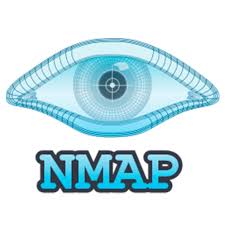Nmap + Zenmap — Classic Scanner with a Handy Frontend
General Information
Nmap has been around for decades and is still the go-to tool when someone needs to scan a network. It’s command-line driven, packed with features, and can do anything from simple port sweeps to service fingerprinting and OS detection. The downside? Commands can get long and sometimes confusing for newcomers.
That’s where Zenmap comes in. It’s the official GUI wrapper for Nmap, giving admins a way to launch scans and view results without memorizing every flag. The engine is still pure Nmap, but the interface lowers the entry barrier and makes routine checks quicker.
How They Complement Each Other
On its own, Nmap is unbeatable for scripting, automation, and raw flexibility. Zenmap doesn’t replace that — instead, it adds a layer of usability. You can save scan profiles, rerun them later, and see the results in a cleaner format, even with a topology map. Together, they make a pair: the power of Nmap with the convenience of Zenmap.
What Nmap Brings
| Feature | Why It’s Useful |
| Port scanning | Spot which TCP/UDP ports are open. |
| Service detection | Identify services and versions. |
| OS fingerprinting | Guess the operating system. |
| NSE scripts | Extend scans with vulnerability checks. |
| Output formats | Normal, XML, grepable for automation. |
What Zenmap Adds
| Feature | Why It’s Useful |
| Scan profiles | Save common scans, reuse later. |
| GUI results | Tables, trees, and simple maps. |
| Command builder | Shows the Nmap line behind the GUI. |
| History | Keep and compare past results. |
| Multi-platform | Runs on Windows, Linux, macOS. |
Installation Notes
On Linux, installing Nmap is usually as simple as apt install nmap. Zenmap is sometimes in repos, sometimes downloaded separately.
On Windows/macOS, the installer often ships both Nmap and Zenmap together, with a classic setup wizard.
Everyday Use
In practice, admins run Nmap directly for automation — embedding it in scripts, scheduled jobs, or pipelines. Zenmap is more often used during manual checks: scanning a subnet, showing results to a manager, or quickly comparing two runs without parsing command-line output. Used side by side, they cover both automation and interactive analysis.
Limitations
Zenmap doesn’t add new scanning powers, it just makes Nmap easier to handle. For very large infrastructures, raw output still needs to be fed into other systems like a SIEM. Nmap itself is powerful but also complex; learning all the flags takes time.
Why Together Works Better
Nmap alone is like a command-line scalpel — precise, scriptable, but demanding. Zenmap alone is just a GUI without a brain. Put them together and you get the best of both: Nmap doing the heavy scanning, Zenmap making the results readable and repeatable. That combination is why many teams still install both rather than picking just one.
Comparison
| Tool | Platforms | Strong Side | Best Use |
| Nmap | Windows/Linux/macOS | Raw scanning power, scripting | Pen testing, automation, deep scans |
| Zenmap | Windows/Linux/macOS | GUI, profiles, visualization | Manual checks, sharing results |
| Nmap + Zenmap | Cross-platform | CLI power + GUI clarity | Enterprise admins, teams with mixed skill levels |

